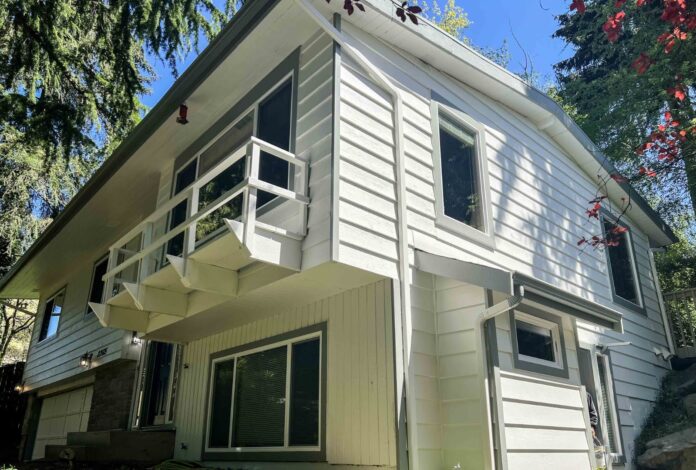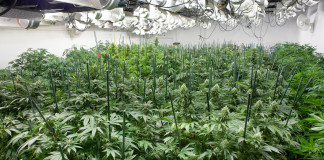When it comes to your home’s exterior, a durable paint job not only enhances its curb appeal but also protects it from the elements. Choosing the right materials, preparing surfaces properly, and applying paint correctly are crucial steps to achieve a long-lasting finish. Here are essential tips for ensuring your exterior paint job stands the test of time.
1. Choose High-Quality Paint
The quality of paint you choose directly impacts its durability and how well it withstands weather and wear.
Tips:
- Acrylic Paint: Opt for 100% acrylic paint for its durability and resistance to fading and mildew.
- Exterior Paint: Use paint specifically formulated for exterior surfaces, designed to withstand UV rays, moisture, and temperature fluctuations.
- Color Retention: Select paint with UV-resistant pigments to prevent colors from fading over time.
2. Prepare Surfaces Thoroughly
Proper preparation is key to a lasting paint job. Clean, smooth surfaces ensure better adhesion and a smoother finish.
Tips:
- Washing: Clean surfaces with a pressure washer or scrub brush and mild detergent to remove dirt, mildew, and chalky residue.
- Scraping and Sanding: Scrape off loose paint and sand rough areas to create a smooth surface for paint to adhere to.
- Repairing Damage: Fill cracks and holes with a suitable exterior filler and sand smooth before painting.
3. Prime Before Painting
Priming provides a base layer that improves paint adhesion, enhances color uniformity, and increases durability.
Tips:
- Types of Primer: Use a primer suitable for your surface material, such as wood, metal, or masonry.
- Spot Priming: Apply primer to bare spots or repaired areas to ensure uniform coverage and prevent paint failure.
- Tinted Primer: Use a tinted primer close to your paint color to improve coverage and reduce the number of paint coats needed.
4. Use the Right Tools and Techniques
Choosing the right tools and applying paint correctly can make a significant difference in the longevity of your paint job.
Tips:
- Brushes and Rollers: Use high-quality brushes and rollers designed for exterior use to achieve smooth, even coverage.
- Sprayer: Consider using a paint sprayer for large, smooth surfaces to achieve a professional finish.
- Techniques: Apply paint in thin, even coats, working from top to bottom to minimize drips and ensure thorough coverage.
5. Pay Attention to Weather Conditions
Painting in optimal weather conditions ensures proper drying and adhesion of the paint to the surface.
Tips:
- Temperature Range: Paint when temperatures are between 50°F to 85°F (10°C to 29°C) for best results.
- Avoid Direct Sunlight: Paint in the shade or on overcast days to prevent paint from drying too quickly and causing lap marks.
- Dry Weather: Choose a period with no rain in the forecast and low humidity to allow paint to cure properly.
6. Apply Multiple Coats
Applying multiple coats of paint enhances durability and provides a more even finish, especially for darker colors.
Tips:
- Two Coats Minimum: Apply at least two coats of paint for optimal coverage and protection.
- Thin Coats: Apply each coat thinly to prevent drips and ensure thorough drying between coats.
- Overlapping Strokes: Blend overlapping strokes to create a seamless finish and avoid visible brush or roller marks.
7. Maintain and Touch Up Regularly
Regular maintenance and timely touch-ups can prolong the life of your exterior paint job and keep your home looking fresh.
Tips:
- Inspect Annually: Check for signs of peeling, cracking, or fading paint, especially after harsh weather.
- Clean Surfaces: Wash painted surfaces annually with mild soap and water to remove dirt and pollutants.
- Prompt Repairs: Address any damage or wear promptly with spot priming and touch-ups to prevent further deterioration.
8. Consider Climate and Environmental Factors
Understanding your local climate and environmental factors helps you choose the right paint and maintenance schedule.
Tips:
- Humid Climates: Use mold and mildew-resistant paint in humid climates to prevent growth and maintain a clean appearance.
- High-UV Areas: Choose UV-resistant paints and apply a protective topcoat to prevent color fading.
- Cold or Wet Regions: Use paints formulated for cold or wet conditions to withstand freezing temperatures and moisture.
9. Protect Landscaping and Trim
Take precautions to protect landscaping, trim, and other surfaces adjacent to the painted area during the painting process.
Tips:
- Masking: Use painter’s tape and plastic sheeting to cover windows, doors, and trim to avoid accidental paint splatters.
- Drop Cloths: Lay down drop cloths to protect plants, shrubs, and outdoor furniture from paint drips and spills.
10. Consult Professionals When Needed
For complex projects or if you’re unsure about certain aspects of your paint job, consult with exterior painting professionals to ensure a successful outcome.
Tips:
- Contractors: Hire experienced painting contractors who use quality materials and techniques for a professional finish.
- Color Consultants: Seek advice from color consultants to choose paint colors that complement your home’s architecture and surroundings.
- Maintenance Advice: Ask for maintenance tips and recommendations to keep your exterior paint looking vibrant for years to come.
Conclusion
Achieving a durable exterior paint job requires careful planning, preparation, and application. By selecting high-quality paints, preparing surfaces thoroughly, using proper tools and techniques, and maintaining your paint job regularly, you can protect your home’s exterior and enhance its curb appeal for years. Follow these tips to ensure your exterior paint job stands the test of time and maintains its long-lasting beauty.










